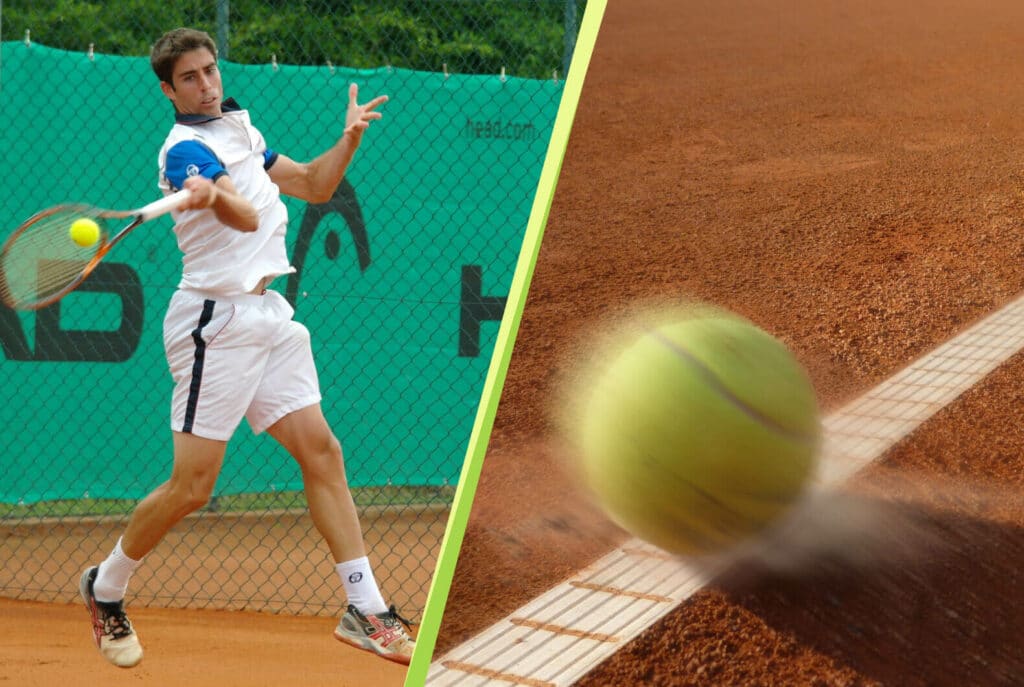
What we'll cover in this article:
Stay in the loop!
Want to be updated when we publish? Be sure to sign up for our newsletter. No spam, we promise!
When playing a regular game of tennis you can control the tennis ball in 5 ways; with direction, speed, height, depth and spin. Learning these is essential to having a solid foundation as a player and reaching at least a reliable intermediate standard. However, mastering spin is perhaps the most important and difficult stage. Applying it allows you to also have an extra dimension of control over the other 4 components. By blending in varying amounts of spin you can adjust speed, direction, height and depth.
What is Topspin?
The two main types of spin in tennis are topspin (the forward rotation of the ball) and backspin (the backward rotation of the ball). Topspin is used in a variety of sports including baseball (pitcher), cricket (bowler), football (freekick) and snooker. As a matter of fact, topspin was popular in these sports many years before it was used in racket sports. The name topspin implies that you hit the top of the ball, which in other sports is true, but not so much in racket sports where we are generally trying to lift the ball. They should have renamed it forwardspin to avoid the confusion of many players and coaches!

The forward rotation of the ball during topspin causes something called the “Magnus Effect” which is a downward force caused by the interaction between the rotating ball and the air. This causes the ball to dip dramatically and it's the reason over 90% of groundstrokes are played with topspin.
Why do we use Topspin?
"Topspin can give you a greater margin for error because the physics of the shot spin the ball forward and downwards, allowing you to hit higher and deeper while still keeping the ball in play within the boundaries of the tennis court"
—Serena Williams
Topspin has two main effects that we can use to our advantage - one that makes life a lot easier for you (sending the ball) and one that makes life very difficult for your opponent (receiving the ball)
Consistency & accuracy - topspin allows you to hit the ball much higher above the net (less chance for error) and still land well before the baseline (less chance for error)! It allows us to “bend” the ball in an arc shape (see the image above). This near ‘vertical’ dropping of the ball just before it bounces is what enables us to be a lot more accurate with topspin. Notice in the image below, for 3 identical variations in contact angle or initial trajectory, how much closer together the ball ‘landing points’ are with topspin relative to shots hit without spin.
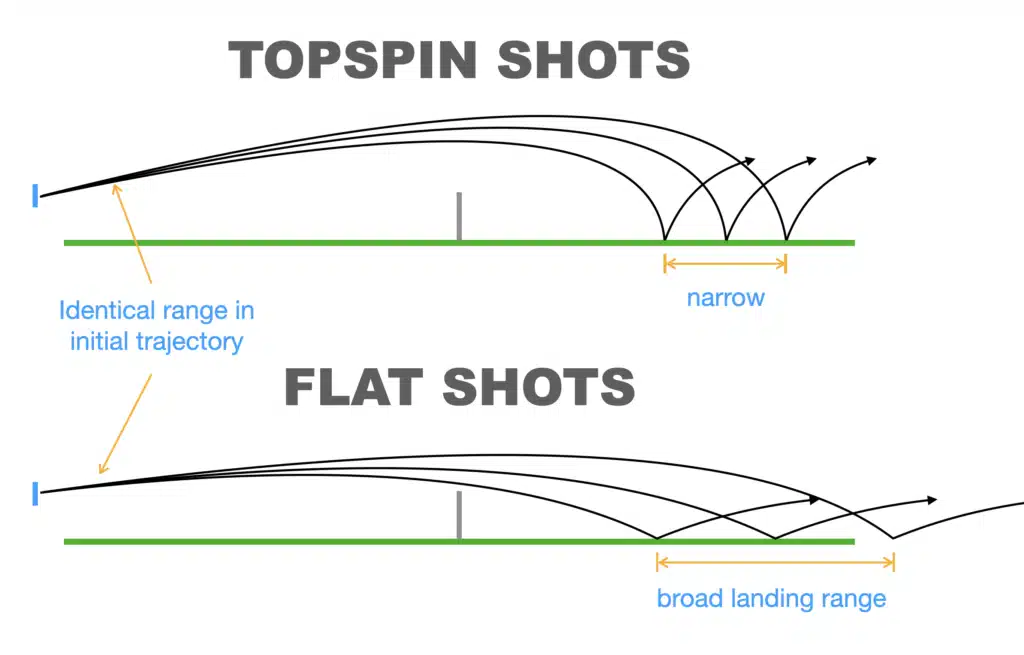
Not only does this mean we can hit the ball harder, but it also opens up a new world of opportunity for angles. The arc-shaped flight path means we can:
- hit deep shots safely
- dip the ball closer to the net players feet
- create wider angles off the side of the court
- bring aggressive lobs back down
- hit down-the-line approach shots that dip before the baseline
All things that are simply impossible with a flat shot.
We can move our opponents around the court in a much more aggressive fashion by applying that topspin. Just think of how much more athletic modern tennis players look compared to the days when topspin was just becoming popular in the 1970s. That’s partially because they have so much more ground to cover. The evolution of topspin and technology has had a direct impact on the development of tennis players as athletes.
Kick - the forward rotation of the ball and the fast dip creates a much more aggressive bounce - a higher trajectory that rips off the court (see diagram above). This ‘kick’ makes life difficult for your opponent in several ways:
- it pins them further back in the court so they have less opportunity to attack
- it forces them to play shots above the strike-zone (hip to shoulder)
- It makes timing the ball harder - they’ll make contact late more often
Topspin is therefore crucial to winning points. It’s also extra effective on slow high bouncing surfaces such as clay. That is why players who grew up playing on clay courts tend to hit greater spin rates than those who did not. Rafa Nadal being the greatest example.
Our article "8 Ways Topspin gives you a tactical edge" will give you some specific pointers about applying topspin tactics to your game!

Tennis Topspin Training Aid
- 2 mins per day
- Practice anywhere
- Rapid results
How do we create topspin?
A common misconception is that topspin is created by rolling the racket face over the top of the ball. Ian Westerman does a great job of explaining why this is not what happens and is in fact physically impossible.
Friction is created by touching the strings to the tennis ball. By moving the strings upwards with that friction, it causes the ball to rotate forward, creating topspin. The faster your strings travel up the ball the more friction and more spin you create. Visualize trying to slide up the back of the ball vs hitting it.
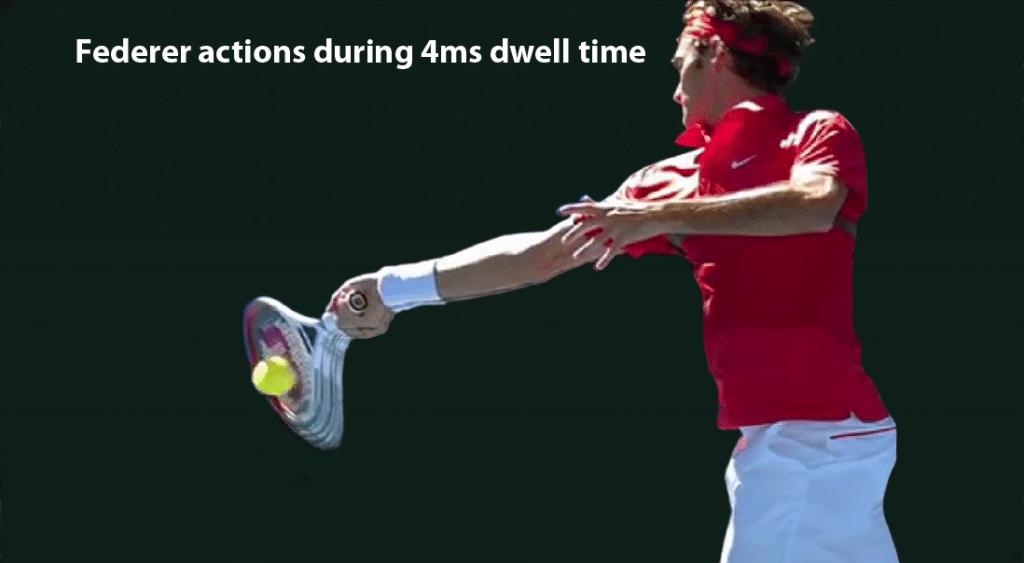
Let’s look at that a bit more closely
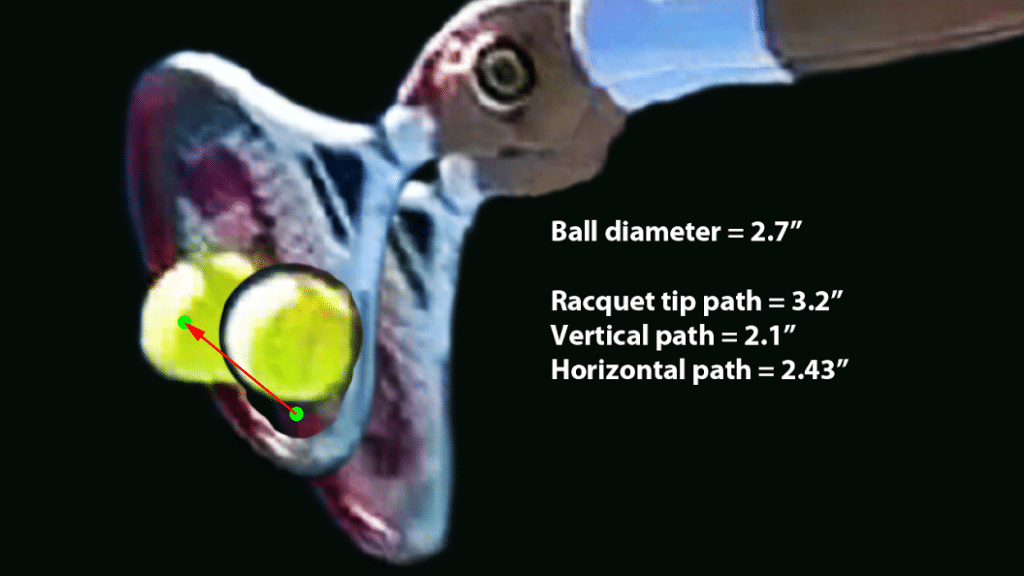
That view makes it look easy. But to deliver the racket face to move up like that in the strike zone you need a certain type of swing path. The typical swing path of a topspin groundstroke is around 55 to 60 degrees.
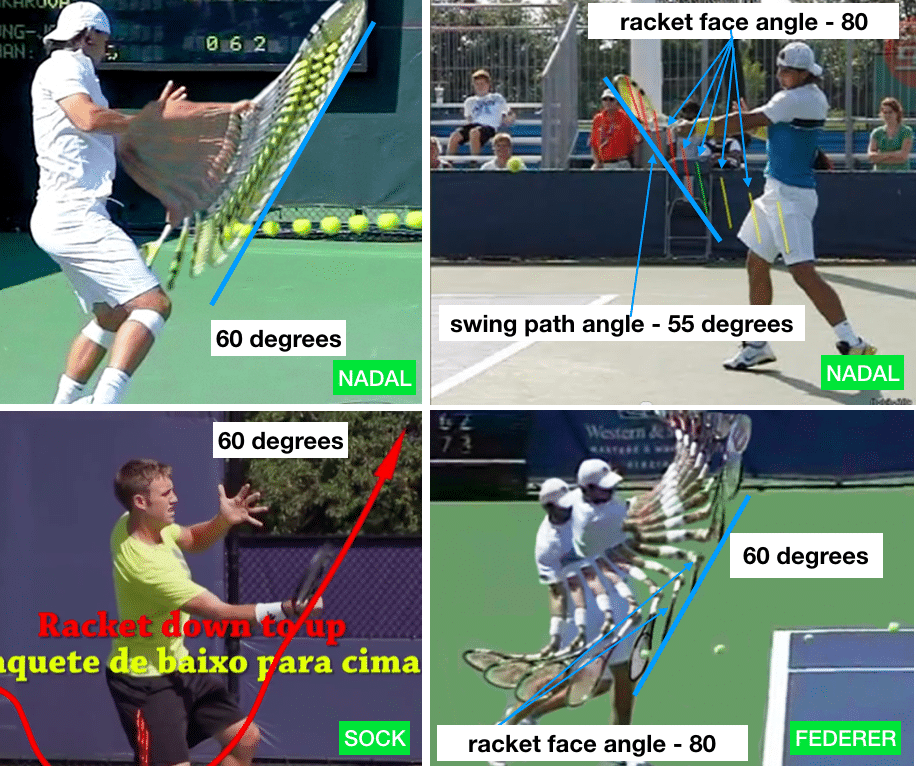
Tennis Analytics produce wonderful images of pro players swings that make it very easy to see what the racket is doing during the swing and why the forehand is so often called the windshield-wiper stroke.

And you can see it here even more clearly in this clip from Simon and Alex from Top Tennis Training.
Bear in mind that if you come too sharply up the back of the ball then you will have too much spin and the ball will drop prematurely. So hitting a topspin shot is actually a combination of an upwards and a forward swing (see the chart below).
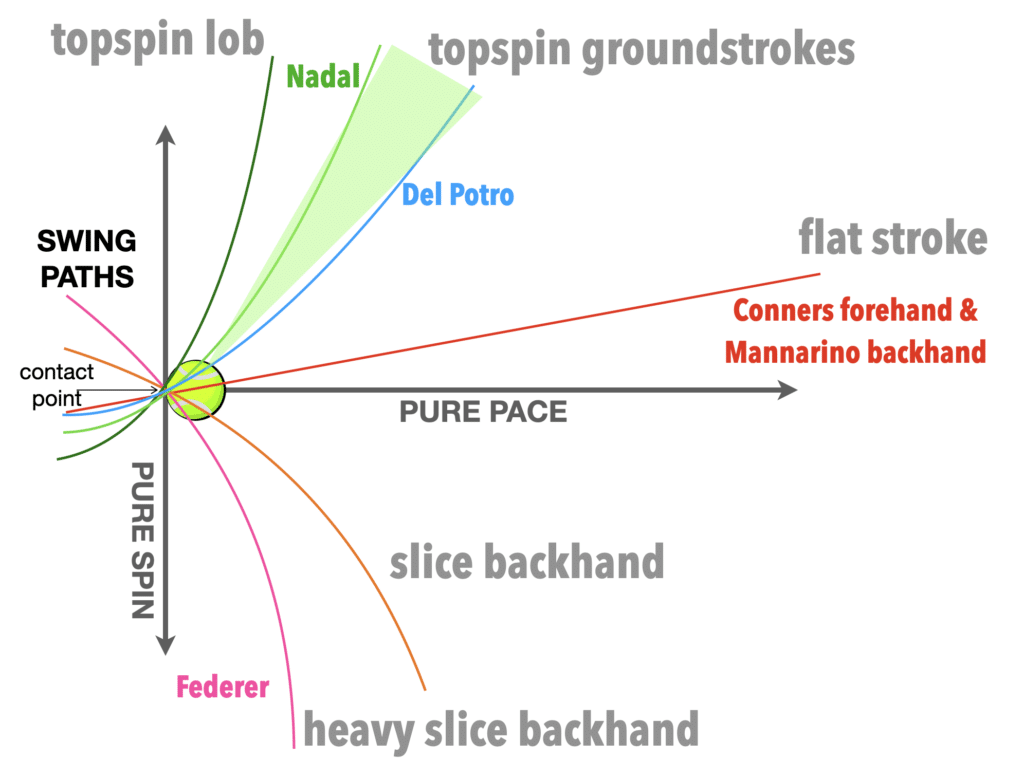
Learning to control these two together is one of the hardest parts of mastering spin. So while there are several elements common to all topspin groundstrokes, it is the ability to master mixing the spin component with the forward swing that adds so many more options to your arsenal.
This is how we adjust the speed, depth, height, direction and spin talked about previously. Every single shot you hit during a match will be a unique blend of the two depending on what you are wanting to do to the ball.
"I would choose Rafael Nadal’s forehand. It has been one of the best forehands of all time, with the heavy topspin"
—Novak Djokovic
Tactical Intention and Topspin
Now we know that each shot you hit is unique, it’s also important to emphasise that you cannot do this successfully without a plan. It’s fairly common in tennis, especially up to the intermediate standard, for players to just “hit” the ball. Basically just swinging at it with no clear intention. This can be surprisingly successful, especially if you are a consistent hitter, but without real clarity you are not going to level up your tennis and win more matches. Hitting lucky winners is great but it’s far more useful to know why.
"One of the things it taught me is that every ball that comes to me, I have to make a decision"
—Billy Jean King
So to apply that unique blend we talked about and to really be successful with moving the ball around, each shot must have a clear directive. For example If you are going to lob, you need a steeper swing path, if you are running to hit a high bouncing short ball you may have to take it earlier and higher than usual. If your opponent has pulled you out wide then a slow looping deep topspin shot will buy you time to recover to a more central position in the court. Each shot presents a different situation. Having the awareness to adjust your technique accordingly and capitalise on the context is a considerable asset.
Wrapping up
The importance of topspin for every tennis player - beginner, intermediate and advanced - is plain to see. Whether you’re wanting to improve the way you hit the ball or force an error from your opponent, topspin is the solution.
But while it is important to practise the common threads of topspin technique once you’ve mastered that, it's even more useful (and exciting!) to practise shot by shot. The ultimate goal is to never hit a shot that you didn’t intend to - good or bad! “Decide what to do” and then “do what you decide”. Tennis is a game of decision-making and execution.
We’ve shared a lot of sensible reasons for using topspin. But perhaps the most satisfying reason we hit topspin is for the sheer thrill of crushing it! There is nothing that quite compares with that feeling of ripping your racket up the back of the ball at top speed and still keeping the ball in the court. A full tilt controlled topspin forehand is arguably the most enjoyable shot you can hit on a tennis court! Or maybe it's tearing a Federer-esque one-hander cross court? Or unleashing a lazer-like Djokovic backhand down the line? ...I'll let you decide.
You can read more about topspin in our article "8 Ways Topspin gives you a tactical edge"
Please let me know what you think of this post in the comments below.
TOPSPINPRO BEGINNER COURSES
We use the latest neuroscience in our TopspinPro Online Courses. Check them out for some in depth help with developing your shots:

Tennis Topspin Training Aid
- 2 mins per day
- Practice anywhere
- Rapid results
FAQs
-
What is topspin?
Topspin is the forward rotation of the ball, causing a downward force known as the Magnus Effect. This force makes the ball dip dramatically, allowing it to stay in play more effectively.
-
Why is topspin so important in tennis?
Topspin allows players to hit the ball higher above the net and still land it within the court, increasing consistency and accuracy. It also creates aggressive bounces that make it difficult for opponents to handle.
-
How does topspin affect the ball's flight and bounce?
Topspin causes the ball to dip quickly and bounce higher off the court. This makes it harder for opponents to time their shots and often forces them to play from less advantageous positions.
-
How can I create topspin in my shots?
Topspin is created by moving the racket strings upwards against the ball, generating friction that causes the ball to rotate forward. The key is to blend an upwards and forward swing to control the spin and direction.
-
How can topspin give me a tactical edge in a match?
Topspin allows you to hit deep shots safely, create wider angles, and execute aggressive lobs and approach shots. It also pins opponents back and forces them to handle high-bouncing balls, increasing their chances of making errors.
Links Related to This Article
Enjoyed this article?
Be sure to sign up for our newsletter and we'll keep you up to date about new posts
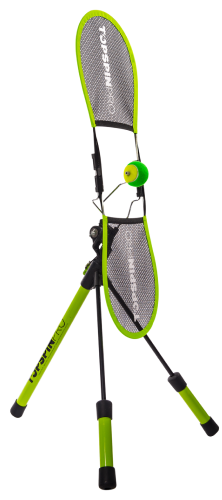
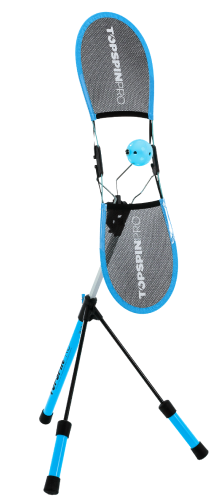
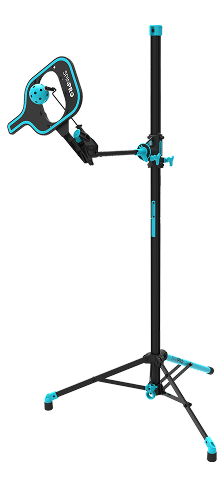

2 comments
It would be nice if you would acknowledge Oscar Wegner, who has been teaching the topspin forehand you so aptly describe since the 1960’s.
Hi Lucy! I am so sorry I have not replied sooner. Oscar is an extraordinary tennis teacher and changed the trajectory of how people learn the game. I actually introduced Oscar to Anatoly Antipin, whose images I use in the post. I will look at including him somehow but would need to do it in context as their have been several people that influenced my views on the forehand.